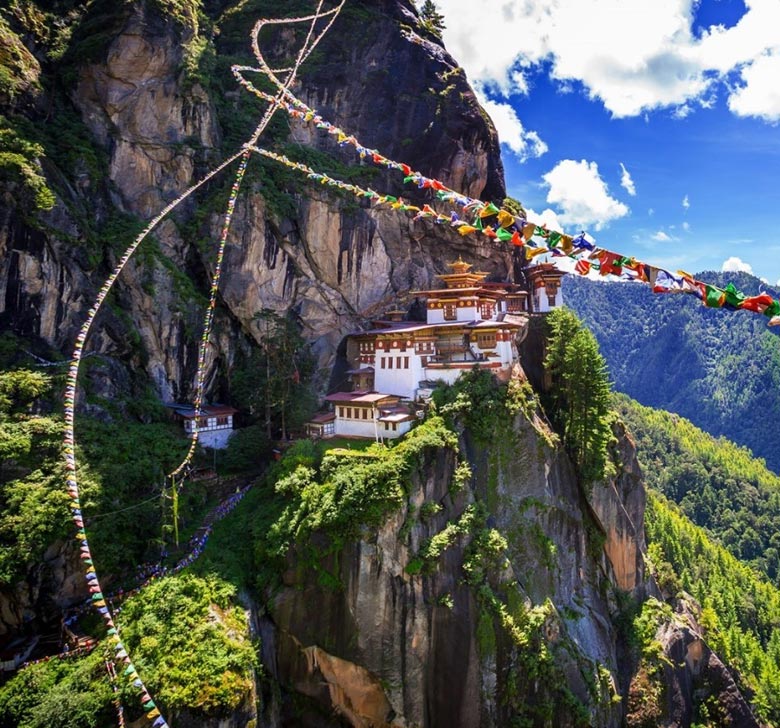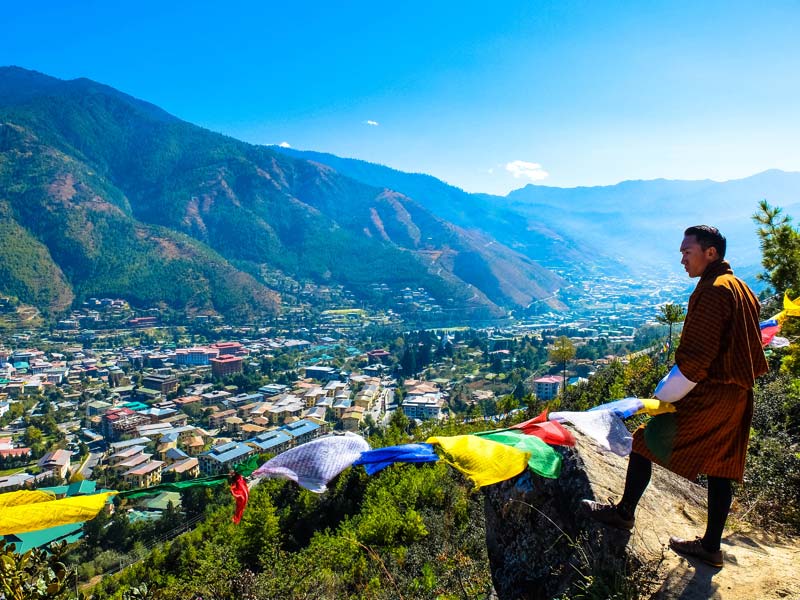Sightseeing in Paro Bhutan, History of Paro, Best Time to Visit, Tourist Attractions in Paro
Paro is a historic town with many sacred sites and also historic buildings scattered with the area. Additionally, the Paro Valley is large and also verdant and is acknowledged an among one of the most gorgeous in all Bhutan. Prefer to stay in Paro if you are someone that enjoys nature and would love to invest quite as well as peaceful time. However, besides the major road (which is built of constructed of traditional wooden structures), Together with Jakar as well as Punakha, Paro forms the ‘gold triangle’ of popular tourist locations in Bhutan.
The valley of Paro has many interesting sites and requires a few days to be properly explored. The ruins of Drukgyel Dzong, at the end of the valley, are a magnificent place to view the towering peak of Mount Chomolhari. Also of interest is the National Museum, which is in a converted 17th-century watchtower. The museum has an extensive collection of Bhutanese artifacts. Situated in a commanding viewpoint at the eastern end of the Paro Valley, the Paro Dzong, also called “the fortress of the heap of jewels, is an architectural wonder.
To fully appreciate the beauty and splendor of this magnificent valley, a walk on foot through the village and its surrounding areas is suggested. Your tour operator will arrange private transportations to many of the historic sites. Their streets are not named in Paro, including the main road, which is affectionate, referred to as “Main Street,” is how it is listed here.
Paro Village
The village of Paro rests in the center of this vast valley, a short distance from the Paro Dzong. The town itself is small since most locals live in the valley that surrounds it. Chortens (Buddhist monuments) flank the main road that takes you from the dzong’s traditional cantilever bridge into Paro village. On the right is the royal palace of Ugyen Petri, and directly adjacent on the other side is the archery field.
Built in 1985, the town consists of one wide street that runs parallel to the river. There are several small shops, as well as local eateries lined up and down the main street. A small grass town square sits at one end of town, surrounded by a few hotels, handicraft shops, the post office, and restaurants. It’s worth spending some time meandering through the shops to observe the local customs and wares of this mountain town.
History of Paro, Bhutan
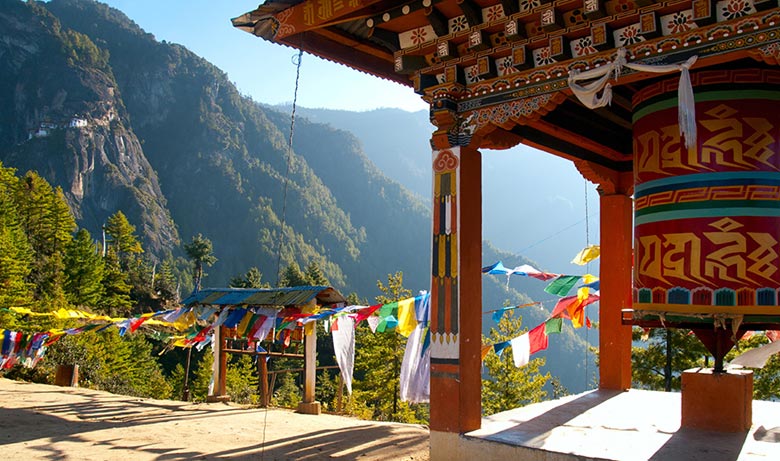
Taktsang and Kyichu Monasteries
Rinpung Dzong a fortress-monastery forgetting the Paro valley has a lengthy history. A monastery has first improved the site by Padma Sambhava at the start of the tenth century, but it was not up until 1644 that Ngawang Namgyal built a larger monastery on the old structures; for centuries this imposing five-story building worked as an effective defense against countless invasion attempts by the Tibetans.
Developed with stones instead of clay, the Dzong was named Rinpung, indicating “heaps of jewels” yet Rinpung and all its treasures were destroyed by the fire in 1907. Just one thangka, only one Thongdel, was saved. The Paro Dzong was rebuilt by the penlop dawa Penjor after the fire. Housed within its walls is a collection of sacred masks and costumes. Some date back a number of centuries; others were contributed by Dawa Penjor as well as his follower Penlop Tshering Penjor in current times.
On the hill above the Dzong stands an ancient watchtower called Ta Dzong which since that 1967 has actually been the National Gallery of Bhutan. Across a medieval bridge below the Dzong stands the Ugyen Pelri Palace, and royal residence built by Penlop Tshering Penjor.
⇔ Did you understand: Paro is the third-largest city in Bhutan by population (11,448)
How You Can Go Paro Bhutan
- Paro Airport Terminal, PBH. An international airport situated in a deep valley.
- Druk Air, (Royal Bhutan Airlines) is the major airline company offering Paro Airport terminal, and offer a flight to from Bangkok, Delhi, Dhaka, Kathmandu, and Kolkata.
- Bhutan Airlines now serves Paro on a daily basis from Kathmandu.
- Can hire a taxi from Thimphu as well as reach Paro in approx. 45 mins. The drive of 30kms is very enjoyable as well as roads keep on unfolding with every turn.
The gateway to Bhutan. Home to Paro Airport, the only international airport. This is where you begin the journey to the land of happiness. The average elevation of 2,300 meters above sea level.
Distance from Paro to Other Places
- From Paro to Thimphu – 65 km – 1 hour
- From Paro to Haa – 65 km – 2 hours
- From Paro to Phuentsholing – 175 km – 5.5 hours
- From Paro to Punakha (Via Thimphu) – 140 km – 4.5 hours
Best Time to Visit Paro Bhutan
The ideal time to go to the city of Paro is throughout the months of September up until November. In this period the skies are clear along with the sun is shining, with that, the maximum temperature experienced over this time is rarely 20 degree Celsius. This is also the best period for Paro Bhutan sightseeing and tour as you can delight in a little skiing as well as trekking. It is also advisable for the travelers to carry an umbrella along as there are opportunities for heavy rain sometimes.
Sightseeing in Paro Bhutan
1. Taktsang Monastery, Tiger’s Nest:
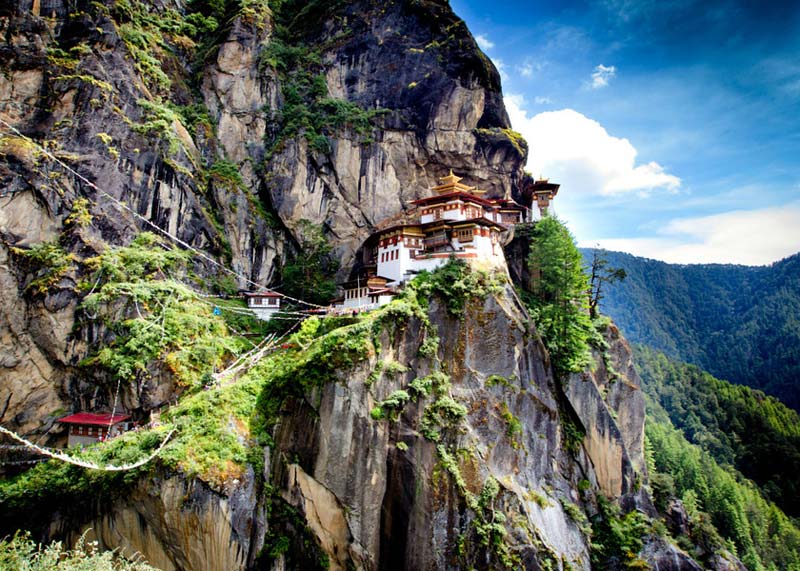
About Tiger Nest Monastery (Taktsang Monastery)
Tiger’s Nest is precariously perched on the edge of a 1200 meter high cliff; this monastery develops a remarkable sight and also is unofficial view sign of Bhutan Paro. It takes regarding a 2-3 hr. a totally uphill hike from the parking area to the monastery. The hike to this area can be really laborious and also you could lease an equine as much as the mountains. But it is also suggested that if you are not very fit and are prone to altitude sickness, then you have to be extra cautious. Upon return, you need to make way down the mountains by foot.
This day-long tour begins as you drive northwest down the valley. About 3 kilometers out of town, just south of the road is Kyichu Lhakhang, built in the 8th century and one of Bhutan’s most sacred shrines. Continuing down the road past Kyichu Lhakhang for about 5 km, you will see Taktsang, the famous “Tiger’s Nest” monastery, which clings to the edge of a cliff high above the valley. The walk up to the monastery was a part of every traveler’s itinerary before a fire in 1998 destroyed much of the main structure. It is still worth the effort to hike to the top for the views and glimmer of historic interest. If you don’t want to make the three-hour hike up the mountain, there are ponies for hire. Just be sure to have your tour operator make your reservations a few days in advance. On the way up, you cross several small streams, pass, chortens with prayer wheels, walk through blue pine forests, and emerge on a bluff bristling with prayer flags. From this point, it is a short distance to a lovely log cabin restaurant where you can rest, have lunch, or buy some interesting handicrafts, Although the view from the restaurant is spectacular, many people make the strenuous walk closer to the overhang for a better view. From this vantage point, the monastery looks like it emerges from the cliffs.
Beyond Taktsang Lhakhang, the road continues down the valley through the small farming village of Drukgyel. At the end of the paved road lays the ruins of Drukgyel Dzong. If you are lucky, you’ll get a clear view of the lofty peaks of Mount Chomolhari (24,000 ft) that tower in the distance. This is also the starting place of the Chomolhari trek.
Even if you take the hike up to Taktsang Lhakhang, it shouldn’t take more than a half day to cover these sites. Since it is quite a steep ascent, do plan on extra rest time while walking up the mountain. There is very little shade along the trail, so bring water and wear a hat to protect you from the sun. It’s worth spending some extra time at the restaurant, which is a lovely place to relax while taking in the views.
It takes three hours to walk to the Taktsang Cafeteria ., It is definitely worth the walk to the restaurant; the charming log cabin, made of oak and blue pine, has spectacular views of the monastery. Considering that all the food and drinks have to be carried up the mountain, they have a good selection of beer. For those who have worked up quite an appetite reaching Taktsang, they serve a set lunch that includes Bhutanese and Chinese dishes.
2. Druk Choeding
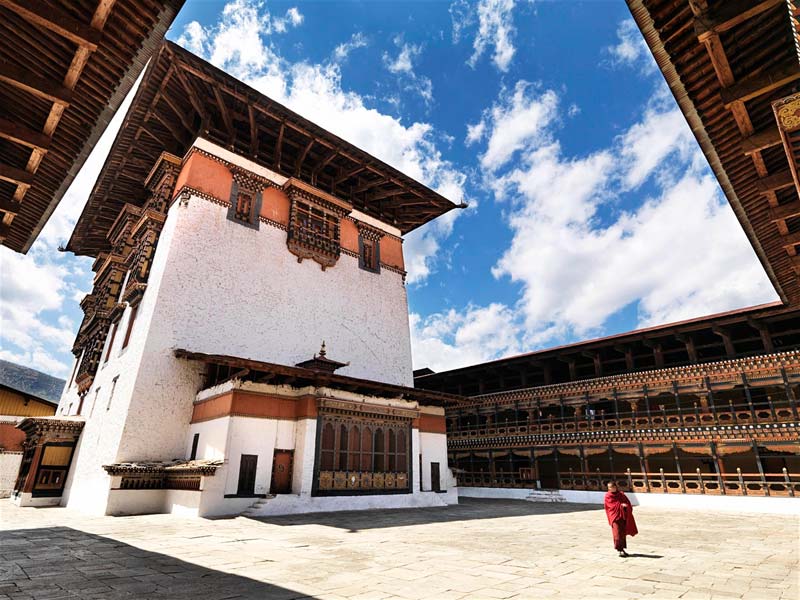
This temple was built in 1525 by Ngawang Chhogyaj, an ancestor of the Prince Abbotts of Ralung, in Tibet. The Abbott; high priests of important monasteries, wielded immense political power by virtue of their religious standing. This temple is also known as Tshongdoe Naktshang. Main St., Paro.
3. Sonam Trophel
(2nd floor, above the Bank of Bhutan, Main St., Poro, ‘ 08/2-71287) is a small café that has long been a favorite of expatriates. There is no menu, but the proprietor uses all of her own recipes and is more than happy to make suggestions. Try the momos (meat-, cheese-, or cabbage-filled dumplings), they’re some of the best in Poro.
4. Dumtse Lhakhang
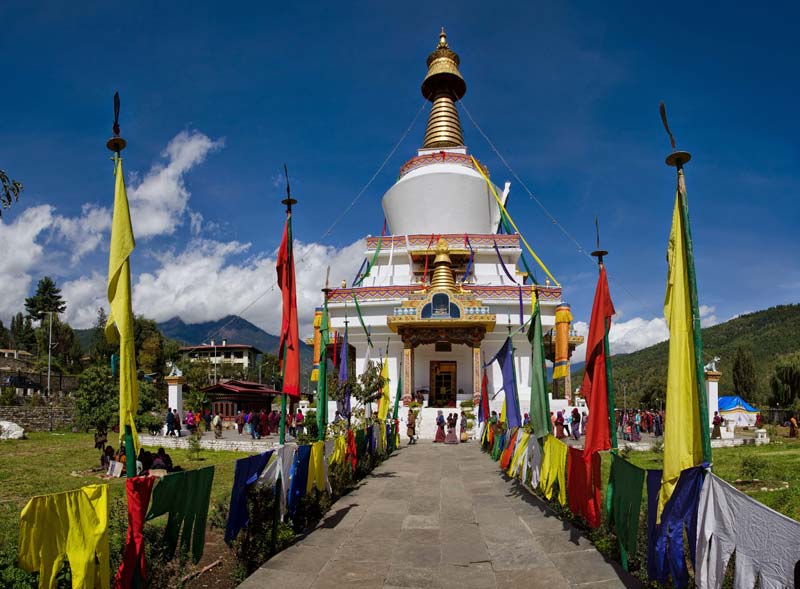
Dumtse Lhakhang is an unusual temple built in the shape of a chorten. It was built in the early 1400s by Thangtong Gyalpo, a famous Tibetan lama who was also known as “the builder of iron bridges,” for the eight such bridges he built before returning to Tibet. The temple was designed with three different levels representing heaven, earth, and hell. Dumtse Lhakhang has one of the most magnificent collections of religious paintings in the Himalayas. Location: West of Main Street, Paro.
5. National Museum
The museum is located just above the Paro Dzong, in an ancient building that used to be a watchtower. It is also known as Ta Dzong because the numerous religious objects inside have resulted in the museum’s designation as a temple. Realizing the significance of museums in the development of national identity, His Majesty King Jigme Dorji Wangchuck ordered the renovation of the museum in 1965. It continues to be an important center for the preservation of Bhutanese artifacts, culture, and history, not only for foreign travelers but for the Bhutanese as well. The museum plays an important role in the education of Bhutanese children, many school groups and villagers travel here from remote areas. Because of the museum’s religious significance, you must proceed through the building in a clockwise direction. A guard will show you the way.
There are six floors of galleries, surrounding a core that contains a fine collection of iconographic representations of the beliefs of Bhutanese Buddhists. In addition to containing paintings (all by Bhutanese artists), the museum houses traditional handicrafts that reflect daily life, prehistoric and medieval artifacts, ancient weapons and shields, a variety of stuffed animals, and a diverse assortment of religious costumes and ritual objects.
Overlooking the main floor, a balcony houses large the thangka gallery, a large broidered and painted religious banners. On the top floor, the gallery has an extensive collection of Bhutan’s notorious philatelic stamps. Quite an unusual arc the holographic stamps, stamps, and three-dimensional stamps. In the center of this gallery is the Tshogshing Lhakhang, the Temple of the tree of Wisdom. Situated in the middle of the temple is an elaborate carving that represents the history of Buddhism. Don’t forget to walk clockwise around this sacred room. Other galleries display bronze and copper around teapots, jewelry, horn beer containers, and wooden objects. A natural history gallery includes an amazing display of Bhutanese butterflies. After visiting the museum, you will have a good sense of Bhutanese history, and culture.
6. Ugyen Pelri Palace
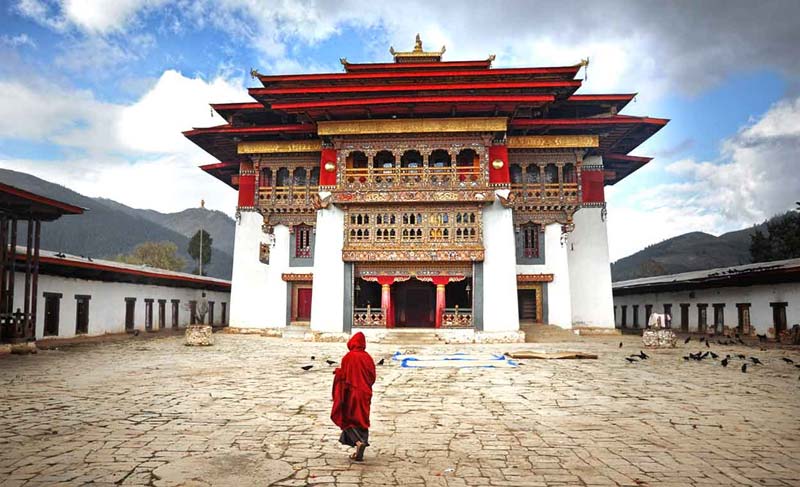
Barely visible from the road, this secluded compound rests on the south side of the river, west of the dzong. The royal palace was built around 1930 by the Penlop (governor) of Paro, Tshering Penjor. An exquisite example of Bhutanese architecture, it was designed to simulate Guru Rimpoche’s heavenly abode, Zangto Pelri) Location: Southeast end of Main Street, Paro.
7. First Spiritual, Rinpung Dzong
It was built in the year 1646 by Shabdrung Ngawang Namgyal, as he was the very first spiritual as well as temporal ruler of Bhutan. The houses of Dzongs are the monastic body of Paro, the office of the Dzongda and also Thrimpon of Paro district. By the traditional coverage bridge called the Nemi Zam is the approach to the Dzong. Likewise during the spring it is the location of Paro Tshechu, held once in a year.
8. The Home of Splendid Statue, Jangsarbu Lhakhang
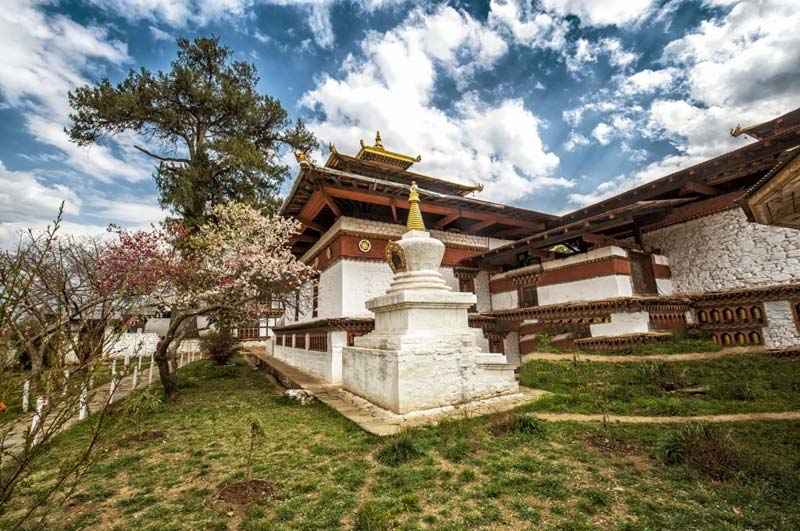
Paro Dzong is the area that lies in this small temple which is house to the magnificent statue of the Sakyamuni Buddha that was carried all the way from Lhasa and houses the protector deity of Paro.
9. Kichu Lhakhang
It is one of the 108 monasteries that are said to have been constructed by King Songten Gampo in one night. This place is located simply off the road running in between Paro Bazaar and also the Taktsang.
10. Motorable Pass, Chele La Pass
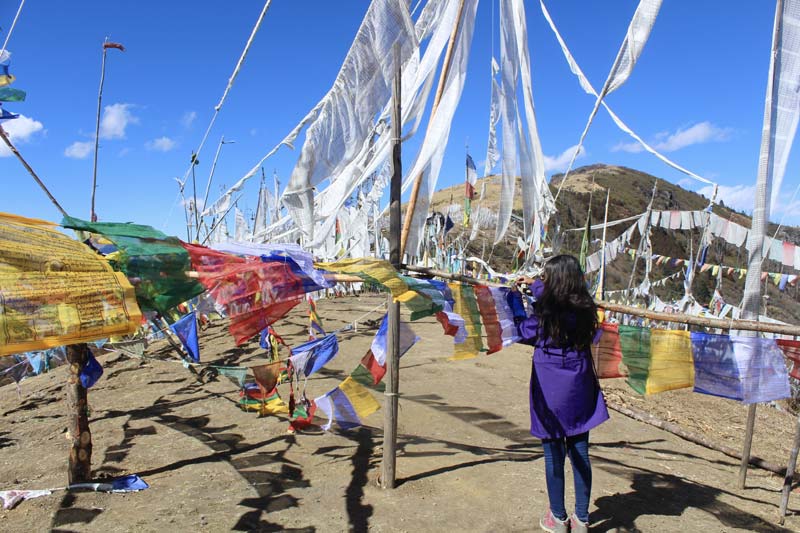
A 2 hours’ drive from Paro will certainly take you to the Chele La Pass, which is the highest motor able pass in Bhutan. At the Haa Valley, the pass connects Paro to the lesser known valley of Bhutan.
11. Drukgyel Dzong
At the end of the road out of Paro, 16 km from the town, lies the burnt ruins of Drukgyel Dzong. Built by Shabdrung Ngawang Namgyal in 1647, on a spur above the Paro Chhu, its commanding location was chosen as a spot from which to control the route to Tibet. It was from this monastery that the Bhutanese were victorious over several invading Tibetan armies during the 17th century. In 1951, a butter lamp fell over, and a terrible fire destroyed most of the fortress, leaving only portions of its walls and roofs. Still, the remains of the dzong form a dramatic profile against the backdrop of Mount Chomolhari. In order to preserve the dzong from complete ruin, a shingled roof was added, and beams were placed throughout for support Drukgyel, 16 km from Paro.
For more information on Sightseeing in Paro and Bhutan holiday packages contact Swan Tours, Delhi – one of the leading travel agents in India. More Bhutan Packages
